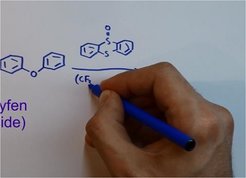New linchpin in aromatic C–H functionalization opens up direct access to a large number of derivatives of complex molecules

With regard to medicinal chemistry, basic chemical research has the ongoing task of enabling the synthesis of complex molecules with useful structural and functional groups in the shortest possible time. In order to avoid having to develop a new synthesis for every derivative of a complex molecule, C–H functionalization reactions can be used that enable the derivatization of an already complex molecule. In order to provide access to many functionalized arenes, the researchers of the Department of Organic Synthesis at the Max-Planck-Institut für Kohlenforschung developed a C–H functionalization reaction that proceeds with high selectivity for one position as well as introduces a functional group that can serve as a lynchpin for further functionalization.
Tobias Ritter's team succeeded in developing a highly site-selective aromatic C–H functionalization reaction that does not require a specific directing group or substitution pattern for selectivity. The new transformation produces a thianthrenium salt that participates in a variety of transition metal and photoredox catalyzed reactions. They report on their research successes in the article "Site-selective and versatile aromatic C–H functionalization by thianthrenation" now published in Nature.
The Ritter Group has produced a video that shows the individual steps in detail so that other researchers can also follow the synthesis path and the team's considerations. It is available on youtube https://youtu.be/r_KPersmNU8.












